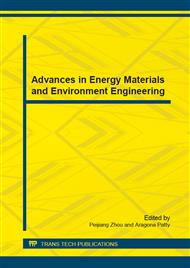p.33
p.37
p.42
p.47
p.53
p.61
p.67
p.71
p.78
Wind Turbine Failure Rate Calculation Method Considering Multi-Factor Influences
Abstract:
In the traditional outage model, the failure rate of the wind turbine is often given as a long-term statistics value on average, that is only one value for a wind turbine, this calculation method is not reflect the real reliability level of wind turbines. According to historical failure data, the factors that affect the wind turbine outage are divided into several categories. Based on Markov Process, the calculation methods for wind turbine failure rate under single factor and multi-factor are given respectively. On this basis, the calculation methods for wind turbine failure rate under different levels of single factor and multi-factor are given respectively based on statistical analysis method. Because different factors are taken into account in the failure rate calculation, the failure rate will change according to the actual factors and then it could reflect the real risk level of power systems when uses this failure rate. Simulation calculation is carried out on a real wind farm; the results show the effectiveness of this proposed method.
Info:
Periodical:
Pages:
53-58
Citation:
Online since:
December 2014
Authors:
Keywords:
Price:
Сopyright:
© 2015 Trans Tech Publications Ltd. All Rights Reserved
Share:
Citation:


